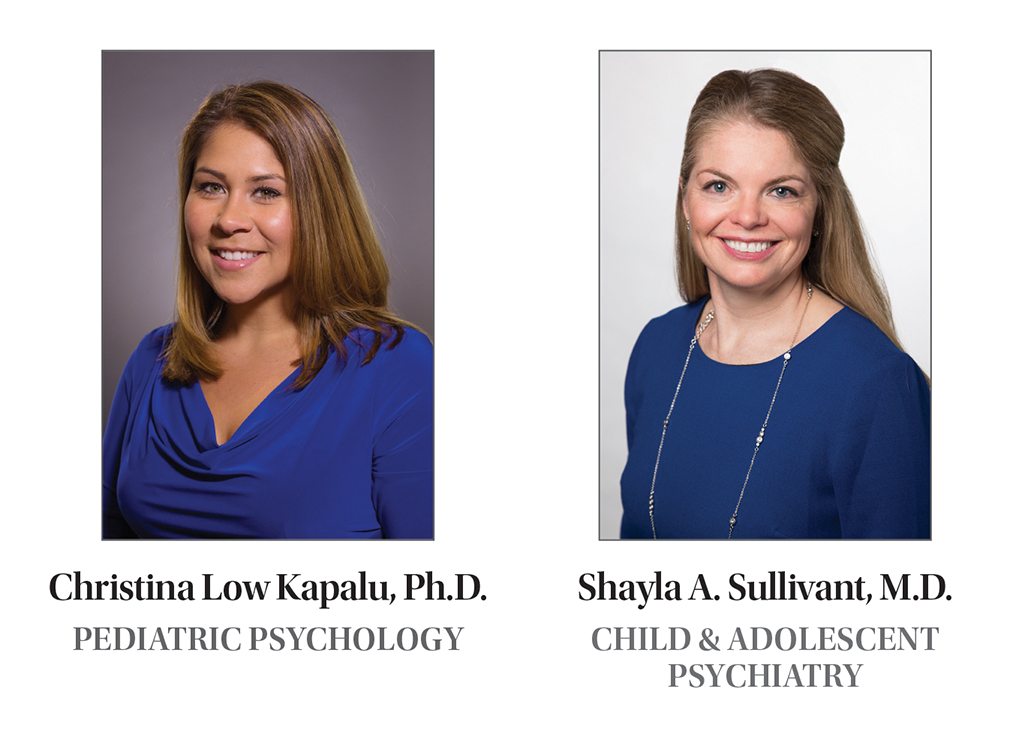May is Children’s Mental Health Awareness Week

Story courtesy of Children’s Mercy
Promotion of mental health is critical to promoting youth well-being. The National Alliance on Mental Illness suggests that one in five teens ages 13-18 years has a significant mental illness and 50 percent of all lifetime cases of mental illness begin by age 14 years. Early identification and treatment of concerns is key to promoting health, well-being and optimal outcomes for your child.
Parents often wonder what constitutes a problem. As parents, you are the expert in your child and are uniquely qualified to identify problems they may be facing. Acting upon your concerns early on is in the best interest of your child and family. Many children will display transient or subthreshold behaviors of concern at some point in their lives. Many families wonder if this is “just a phase” or something their child “will grow out of.”

As a general rule, mental health disorders are diagnosed when symptoms of concern (e.g., sadness or worry) are accompanied by distress in the child or family and impairment in functioning at home, at school, or socially. One indication of concern is when there has been a sudden change in your child’s behavior. For example, they have been a dancer for their whole lives and all of sudden they want to quit dance. This may signal trouble and warrants another look. Mental health providers will work with families to identify when the symptoms started, how often and intensely they are experienced, and how symptoms impact the child’s daily life. The “wait and see approach” is not recommended for responding to mental health concerns. The average delay between onset of mental illness symptoms and intervention is 8-10 years (NAMI, 2019). If your “parent gut” is telling you something is wrong, listen to it and seek help.

What you can do as a Parent
There are of course, warning signs that parents should not ignore. Parents today are understandably concerned about the rising rate of suicides among young people, especially pre-teens (CDC, 2017). It is important to make sure kids know at an early age that we can help them with challenges they may face, including their feelings. Kids may be up front and talk about feeling sad or even say they wished they were not alive — these are more obvious signs, but we know that many kids do not talk unless they are asked. Many parents find that having these conversations during low-stress times is helpful, like during a car ride where you have privacy and won’t be interrupted. Many kids also prefer this to a serious “sit down” at the kitchen table. Kids are often more willing to talk about their peers than themselves, so don’t hesitate to ask about their classmates, i.e. “I hear that more kids these days are struggling with feeling upset. Who do you know that is often worried or sad?” Talking about it helps kids understand that feeling down/upset can be common and parents can help if it’s not getting better. While you want your child to come to you if they are struggling, we also want them to come to us if they worry about a friend. Often kids feel they need to hold secrets for others, and we want them to know that this is not what a good friend does. You can talk about suicide in many ways. When addressing suicide risk, we can inquire about three main areas: thoughts, plans and actions. There are multiple ways to ask in an age-appropriate manner. To identify thoughts, a parent may ask, “Have you ever felt so bad that you wished you were not alive?” Plans can be assessed by asking, “Have you ever thought about ways to end your life?” To address behaviors you can ask, “Have you ever done anything to make yourself not alive?” These are tough questions to ask and early identification and intervention is critical. Most people who have these thoughts and seek help recover. By starting this conversation, you signal to your child that you are committed to getting them the help that they need. We know that asking about suicide does not cause it to happen. It does however, give your child an opportunity to talk about it if they are feeling that way.
Risk and protective factors contribute to the presentation of mental health concerns in youth. While parents cannot do anything to change their genetic contributions to mental health, they can promote protective factors for their children. Families can and should prioritize a balanced lifestyle in youth including adequate sleep and nutrition, exercise, and maintaining relationships with others. In our busy world, it is easy to plan every minute of every day. Promotion of mental health may mean identifying opportunities to cut back on commitments and prioritize family time and sleep, for example.

Seeking Support
There are a number of venues for accessing mental health resources that families can consider. When a family identifies the need for help, they don’t want to wait weeks or months to see someone. A great first step families can take is to schedule an appointment to talk to their child’s primary care provider about their concerns. Health care providers can conduct an initial symptom screening, provide referrals and consider medication as needed. As mental health concerns are common, many primary care providers are comfortable discussing management of symptoms and likely have their own referral resources. The next step families can take is to inquire about mental health supports at school including the school counselor, social workers at the school, or socio-emotional skills groups. These resources, while not designed for long term care, can provide great support for youth while their families work to locate mental health therapies. Psychotherapy can be delivered in individual or group format and adjunctive family therapy can be provided. Therapy can be obtained from doctoral level psychologists or master’s level therapists (psychology and social work). Psychiatrists or developmental pediatricians can be also be helpful in determining if medication is needed to help manage symptoms and improve functioning. Thankfully, there are many ways to seeking help for your child and we encourage families to explore all treatment options to find what best meets their needs and which services are available in their area. As mental health professionals, we know that there is a growing need for mental health specialists, so at times it will take extra effort to identify someone that can help.

Resources
childmind.org: From the Child Mind Institute, this website has a wealth of information on how to parent kids who may be struggling with a variety of concerns including depression, anxiety and suicidal thoughts
sptsusa.org: From the Suicide Prevention Resource Center, an article that further discusses talking to your child about suicide
adaa.org: Anxiety and Depression Association of America, article on Children and Teens with depression
National Alliance on Mental Illness (NAMI) Information, links to support, and educational materials.




